Going beyond your comfort zone
By Joshua Lim and Eugene Toh (Class of ’21)
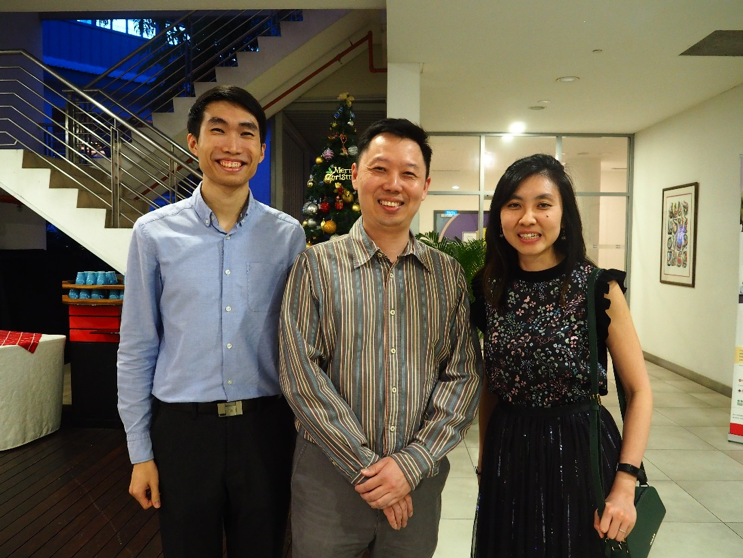
Dr Jonathan Seah (middle) and Dr Constance Neo (right) with student writer Joshua (left)
In commemoration of the 10th year anniversary of the NUS Doctor of Pharmacy (PharmD) program, we speak to one of the graduands from the pioneer cohort, Dr Jonathan Seah (PharmD Class of ’11), and a recent graduand, Dr Constance Neo (PharmD Class of ‘18) to learn about their motivations in joining the program and main takeaways from it.
Can you share with us briefly about your background?
Dr Jonathan Seah (JS): Upon graduation from NUS Pharmacy with a BSc. (Pharm.) (Hons.) Degree, I did my pre-registration training at Changi General Hospital (CGH). After that, I continued to stay on and ran the drug information service, until I embarked on the PharmD program 10 years ago. I am currently an Infectious Diseases (ID) pharmacy specialist, with significant involvement in the Antimicrobial Stewardship Program (ASP).
Dr Constance Neo (CN): I was the 49th NUSPS President during my undergraduate days. After completing PharmD, I decided to further my interest in geriatrics, and am currently overseeing a continuous care continuum for older adults (starting from inpatient to post-discharge & preventive care).
Could you share with us on the structure of the PharmD program?
JS: The inaugural batch comprised 5 students. In the first year, there was a heavy focus on didactic learning with lots of direct interaction with the clinical faculty. There were a lot of material to cover as part of our coursework, some of which were not encountered in our daily work previously. Since then, there is a greater use of the flipped classroom approaches now, but what remains is the rigorous academic content to reinforce a strong foundation in pharmacotherapy knowledge. The course encourages peer learning – not just from our batchmates, but also from the clinical faculty, many of whom are specialized and actively practicing in the field they teach.
The second year of the program focuses on rotations (clerkships) across the different hospitals in Singapore. This includes opportunities to go overseas, where students are exposed to different healthcare systems and cultures. The overseas rotations can bring about meaningful exchanges with fellow students, residents and preceptors, further broadening the perspectives of the PharmD students.
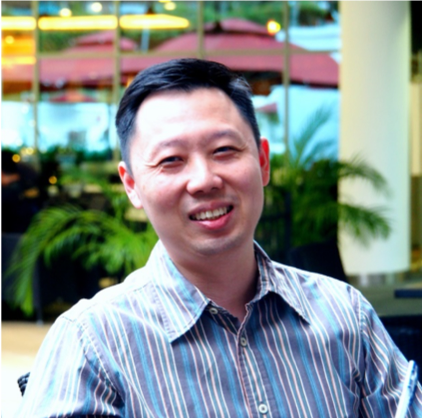
CN: There is also the option to do the clerkships entirely in Singapore. Students undergo eight 5-week clerkship rotations, of which the four compulsory clerkships are in the areas of ambulatory care, adult acute care medicine, adult general medicine and drug information.
What motivated you to pursue PharmD in NUS?
JS: There was an impetus to enhance my clinical skills and knowledge. I wanted to upgrade myself, to know more in order to do better for patient care.
CN: I wanted to gain exposure on how an “interventionist” might tackle some of the medical issues plaguing our older adults. I wondered if more could be done for them, and correspondingly, if better health outcomes could then be realised. PharmD differs from other programs, such as a Masters in Clinical Pharmacy, in that there is a year dedicated to clerkships which offers invaluable practical experiences.
How have you been able to serve patients better after graduating from the PharmD program?
JS: The overseas clerkships were very enriching as it allowed me to appreciate the differences between the healthcare systems, financing models, patients and cultures. This broadened perspective has impacted my practice. For example, it helped to frame a different approach to what we shared with the PharmD students who did their DI clerkships with me. I also got more involved in antimicrobial stewardship, which fuelled my decision to embark on a specialty residency training to become an ID specialist.
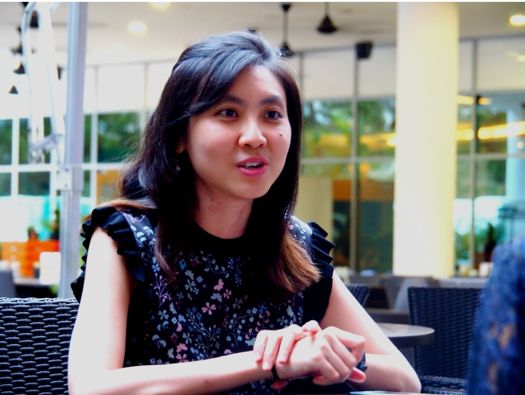
CN: Due to the largely self-directed nature of learning formats in PharmD, I had the opportunity to hone my clinical reasoning skills and engage in a more collaborative practice model. This enabled me to be more assured with decision making in ambiguous situations. As an outpatient pharmacist prior to PharmD, the program has also helped me to adapt more quickly for inpatient work upon my return to the hospital
What are your aspirations for the pharmacy profession?
JS: A pharmacist is a member of the healthcare team. I hope the team can work synergistically, and be one where members support each other. Hence, we want everyone to be able to move forward and to enhance our capabilities together.
As a pharmacist, we can play different roles during patient care. I can be the patient advocate who speaks up for the patient (e.g. when there is an adverse drug effect, or to recommend a more affordable treatment); I can be the cheerleader who boosts the patient’s morale and improve their compliance to treatment, or I can be the safeguard who ensures that the benefits of a medication outweigh the risks. Ultimately, pharmacists may not be restricted to a single role. Rather, we should pick up the necessary skills and knowledge that best helps the patient.
CN: I hope that pharmacists will try to stretch themselves as well. Even if something falls outside our area of specialization, I feel we should continue to challenge our boundaries and be open to gaining new experiences. “Patient-care” should not be revolving around the patient only; it should also be collaborative: not merely with other healthcare providers, but also with informal caregivers such as family members or other support figures.
Like Jonathan, I feel that pharmacists should celebrate their niche role as “drug experts” within the multidisciplinary team. Ultimately it is about complementing each other, knowing that just as we are the domain experts in certain areas, so are our fellow healthcare professionals as well. The beauty of working and learning as a team is that we actually gain more as a whole.
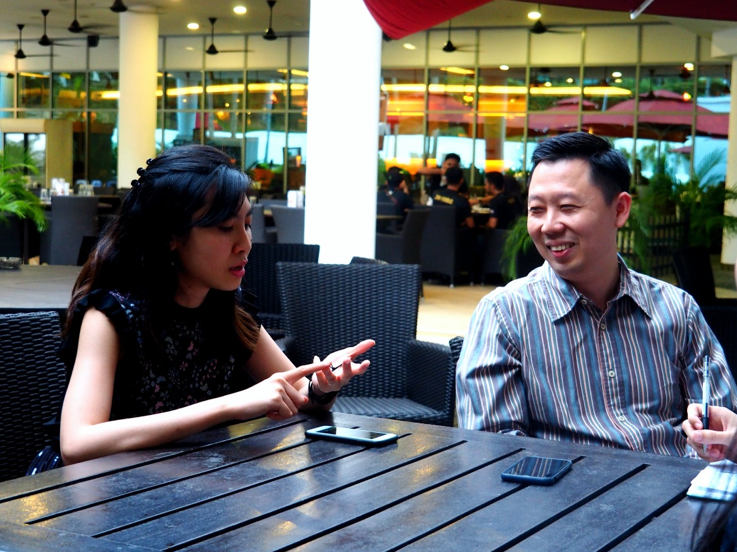
What advice would you give your peers or juniors who may be considering PharmD as an option?
JS: Join the PharmD program with an open mind and willingness to learn. Through the whole program, you will learn different styles, practice models, ways of communication and how to overcome problems. These experiences will shape you to become a better practitioner. Balancing PharmD with family life is very important. I managed to tide through with very good family support. There are bound to be some sacrifices but ultimately you can decide on when is the best time to embark on a PharmD in the grand scheme of life. My advice is, don’t give up on joining the PharmD program just because you think that it is too tough. Many predecessors have done it, and you can definitely do it too if you are willing to work hard and go beyond your comfort zone.
CN: Certain opportunities in life might be time-sensitive. You will need to decide what would be your priorities at any given timepoint, and these, being dynamic, can easily change. Talk to people who have gone through the program, and have a clear idea of what you want to gain from the experience. I found that this really helped me manage my expectations for the learning journey.
We thank Dr Jonathan Seah and Dr Constance Neo for sharing their learning journeys with us and showing us the importance of going beyond our comfort zones in whatever we do, and at the same time not neglecting our life priorities.
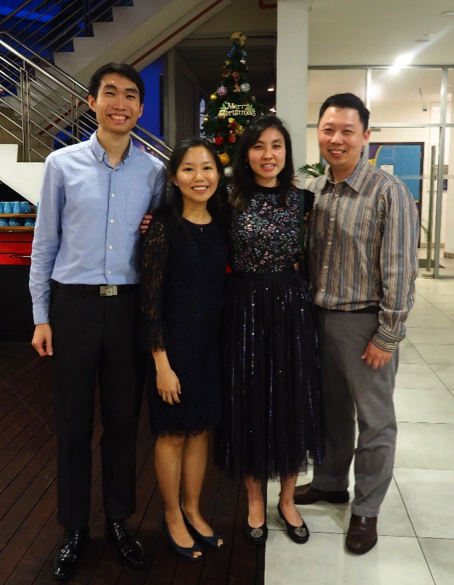
From left to right: Student writer Joshua, Lecturer Dr Chng Hui Ting, Dr
Constance Neo and Dr Jonathan Seah
